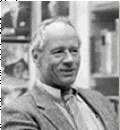Battle of Bunker Hill
The Battle of Bunker Hill
Early on the morning of June 17, Gen. Thomas Gage, governor of Massachusetts and commander in chief of British forces in North America, awoke in his Boston home to learn of a serious new threat.
Behind the ancient towers of the Duke of Northumberland's home are the unique Revolutionary War battle maps of the general who saved the British from disaster at Lexington
Behind the ancient towers of the Duke of Northumberland's home are the unique Revolutionary War battle maps of the general who saved the British from disaster at Lexington
Had a tempest not thwarted his plans, George Washington might have lost the Revolution in the first major operation he commanded
That George Washington drove the British out of Boston in early March 1776 is known to almost every schoolboy who has studied the American Revolution, but a disturbing aspect of this crucial event is not recognized even by most of the experts.
The battle between rebels and redcoats that should have taken place at Bunker Hill was fought at Breed’s instead. It was the first of many costly mistakes for both sides
It is an interesting paradox that, of the two most famous paintings of Bunker Hill, the one that most suggests a real battle was painted by Pyle, the illustrator who lived long afterward, and not by John Trumbull, the painter who saw it (albeit from a distance) and served briefly in the Revolution (see AMERICAN HERITAGE , June, 1958).





